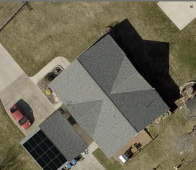A. 6.48Kw 16 panels Q. PEAK DUO BLK ML-G10 Series 405watts
16 Solaredge optimizers
1 Solaredge 7.6 KW Single Phase Inverter w/HD Wave Technology
2 strings of 8
$18,183 $2.81 watt
B. 6.72Kw 16 panels REC Solar - SPR-REC420AA 420watts
16 inverters SunPower SPR-A5
$20,161 $3.00 watt
$17,759 $2.95/watt azimuth 231 degrees (SW)
seeking feedback comparing the 3 systems. all feedback greatly appreciated. thank you
16 Solaredge optimizers
1 Solaredge 7.6 KW Single Phase Inverter w/HD Wave Technology
2 strings of 8
$18,183 $2.81 watt
B. 6.72Kw 16 panels REC Solar - SPR-REC420AA 420watts
16 inverters SunPower SPR-A5
$20,161 $3.00 watt
C. 6.02Kw 14 panels Mission Solar Energy - MSE430SX9Z 430watts
7 inverters iCP-720E (7x)$17,759 $2.95/watt azimuth 231 degrees (SW)
seeking feedback comparing the 3 systems. all feedback greatly appreciated. thank you
Last edited:




